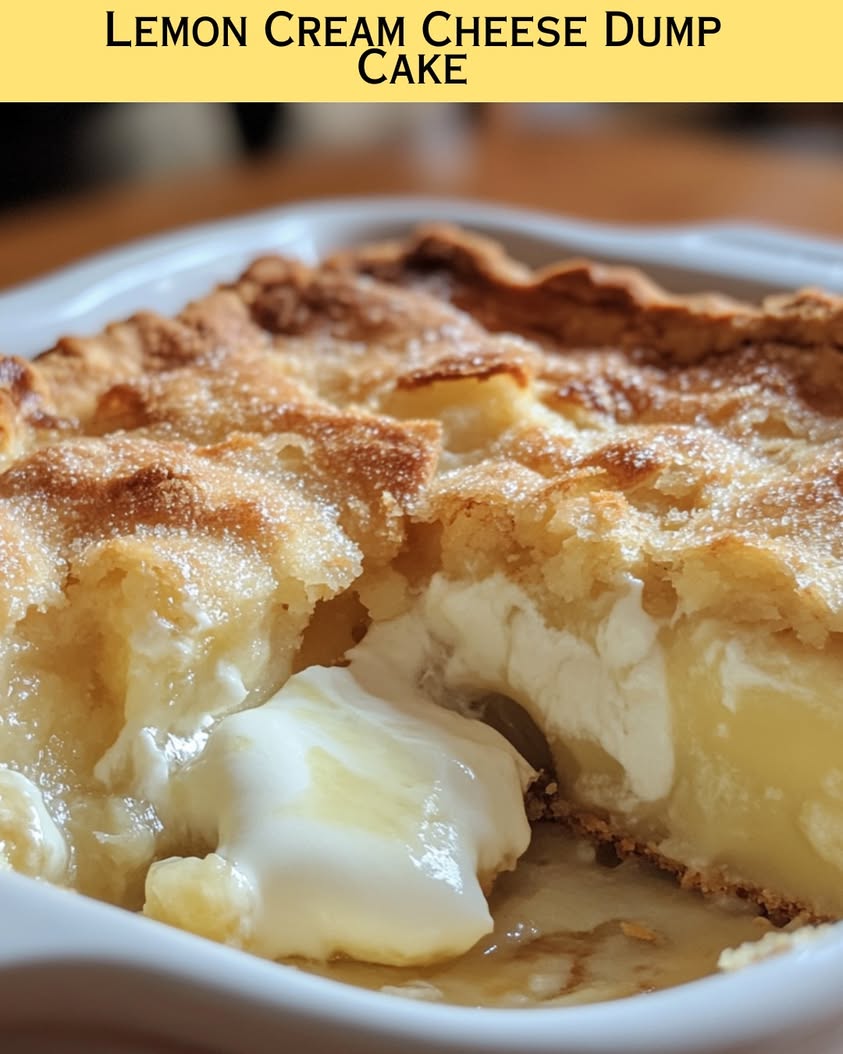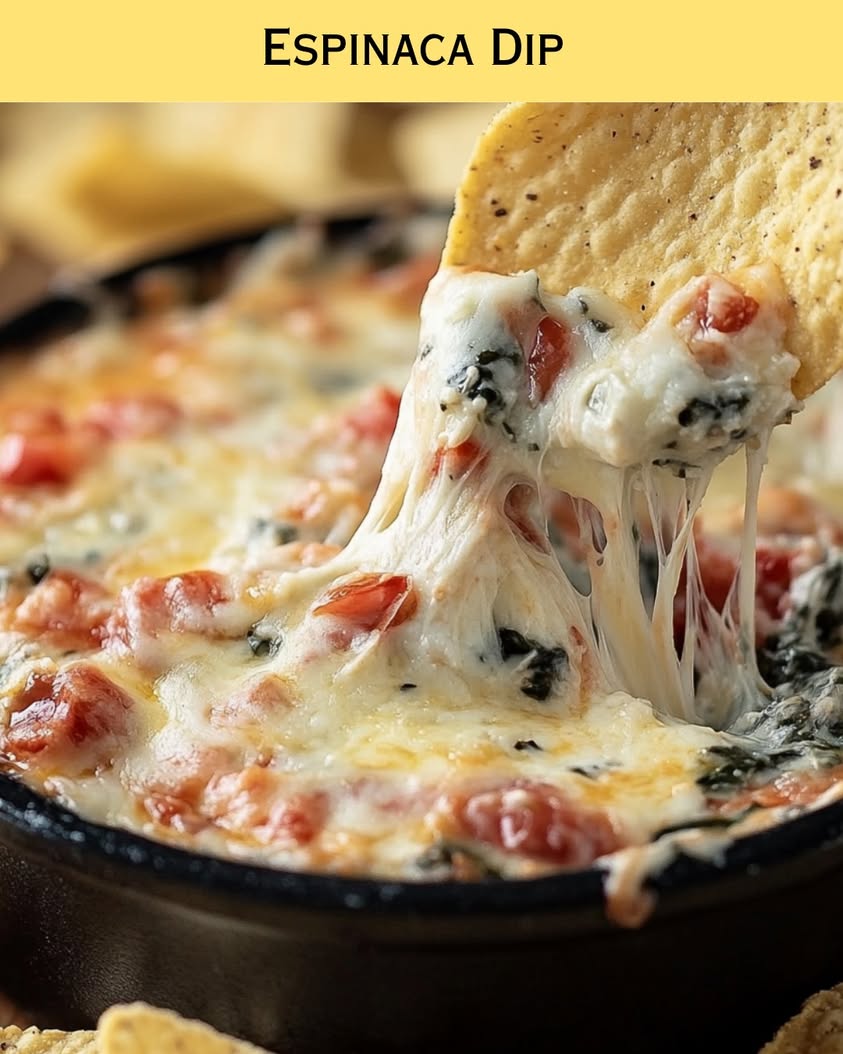Heart-Shaped Raspberry Cheesecake Brownies: A Decadent Delight for Any Occasion
Discover the joy of baking with these Heart-Shaped Raspberry Cheesecake Brownies, a perfect treat that combines rich chocolate brownie goodness with creamy cheesecake swirled together and a burst of fresh raspberries. This delightful recipe not only tantalizes your taste buds but also brings a touch of love and elegance to any dessert table, making it perfect for special occasions like Valentine’s Day or anniversaries. Imagine biting into a fudgy brownie complemented by the tangy sweetness of ripe raspberries and the velvety smoothness of cheesecake—each bite is a blissful experience.
These brownies radiate warmth and love, serving as the ultimate dessert for celebrating life’s little moments or sharing with family and friends. The heart-shaped design adds an adorable twist that’s sure to impress your guests. The vibrant color of the raspberries against the chocolate creates an eye-catching presentation, inviting everyone to indulge. Plus, the recipe is slightly adaptable for those with different tastes—making it versatile for all your baking needs!
Quick Recipe Highlights
- Flavor Profile: Creamy chocolate brownies with pockets of tart raspberry and a luscious cheesecake blend create a delightful balance of sweetness.
- Texture: These brownies provide a decadent chewy brownie base topped with smooth, rich cheesecake that melts in your mouth.
- Aroma: The fragrant aroma of baked chocolate combined with the fresh scent of raspberries fills your kitchen, making it a cozy baking delight.
- Visual Appeal: These heart-shaped brownies showcase a beautiful contrast of deep chocolate and bright raspberry red, perfect for special occasions.
- Skill Level Needed: Moderate skill in the kitchen is required, making this a great project for both aspiring and experienced bakers.
- Special Equipment: A heart-shaped brownie pan is recommended for achieving the perfect shape but isn’t necessary if you have a regular pan.
Recipe Overview
- Difficulty Level: Moderate. This recipe requires some multitasking, as you’ll need to prepare both the brownie and cheesecake layers carefully.
- Category: Dessert. These brownies are the perfect sweet ending to any meal, appealing to lovers of chocolate and cheesecake alike.
- Cuisine: American. This delightful recipe showcases the traditional American love for rich desserts, combining classic flavors into an innovative form.
- Cost: Approximately $10-$15 for the entire recipe, making it an affordable treat for gatherings or special occasions.
- Season: Ideal for any season, particularly spring and summer when fresh raspberries are in abundance.
- Occasion: Perfect for celebrations like Valentine’s Day, birthdays, or as a sweet surprise for a loved one.
Why You’ll Love This Recipe
The Heart-Shaped Raspberry Cheesecake Brownies are an exquisite treat that melds two beloved desserts into one stunning creation. The rich chocolate base offers a deep, satisfying taste that pairs perfectly with the creamy cheesecake layer. The raspberry infusion provides a refreshing tang, balancing the sweetness beautifully. You’ll love the way these flavors come together, making each bite a delicious harmony of taste and texture.
Preparation is a breeze with this recipe! The brownie batter comes together quickly, and the cheesecake layer only requires a few additional ingredients. When you bake these brownies, your kitchen will be filled with intoxicating aromas, setting the stage for a delightful dessert. Plus, they can be made ahead of time, allowing for stress-free entertaining.
These brownies also pack a nutritional punch. Raspberries are rich in vitamins, antioxidants, and dietary fiber, while cream cheese provides calcium and protein. So not only are these brownies a treat for your taste buds, but they also offer some nutritional benefits, making them a more guilt-free indulgence.
Social gatherings will become even more vibrant with these heart-shaped brownies at your table. They serve as appealing conversation starters and are perfect for sharing. Their charming shape and vibrant color make them a hit at parties and family gatherings, and they’re guaranteed to bring smiles to all ages.
Finally, these brownies are cost-effective to make and accessible for many home cooks. With just a handful of ingredients and minimal specialized equipment required, you can whip up this show-stopping dessert without breaking the bank.
Historical Background and Cultural Significance
The origin of brownies dates back to the late 19th century in the United States, where they quickly became a favored dessert due to their deliciously rich flavor and ease of preparation. The concept of combining brownie and cheesecake layers is a modern twist, reflecting today’s culinary trends that seek to mash-up traditional recipes for unique experiences.
Culturally, brownies have long been associated with home baking and comfort food. Their popularity in American desserts speaks to a broader cultural appreciation for baked goods that provide a sense of warmth and nostalgia. Introducing the heart shape adds a layer of sentimentality, perfect for celebrations of love and connection.
Throughout the years, the brownie has evolved significantly, with numerous variations emerging to accommodate different tastes and dietary considerations. Innovations include adding various flavors, such as mint, orange, and now the pairing of raspberry and cream cheese for a sophisticated touch.
Regional variations of brownies exist across the U.S. Some areas favor thick, fudge-like brownies, while others might enjoy lighter, cakey versions. Such diversity showcases the adaptability of the brownie, resonating with bakers from all backgrounds and regions.
Ingredient Deep Dive
Raspberries
Raspberries have a rich history that dates back to ancient Rome, where they were prized for their delicious flavor and medicinal properties. Nutritionally, they are high in antioxidants, fiber, and essential vitamins like C and K. When selecting raspberries, search for brightly colored, plump berries without wrinkles. Store them in a dry container in the fridge for up to a few days and avoid washing them until ready to use to maintain their freshness. If raspberries are not available, consider using strawberries or blueberries as delightful substitutes that will also add a fruity touch.
Chocolate
Chocolate has been a beloved treat for centuries, originating from the cacao trees Central and South America. Its rich flavor and versatility have made it a staple in desserts worldwide. Dark chocolate, in particular, offers health benefits such as improved heart health and increased cognitive function due to its high antioxidant content. When choosing chocolate for this recipe, select high-quality chocolate with at least 60% cocoa for optimal flavor. Store chocolate in a cool, dry place away from sunlight. If dark chocolate is unavailable, semi-sweet chocolate can work as a delicious alternative.
Cream Cheese
The history of cream cheese can be traced back to the 19th century in the United States, where it was first produced commercially. It’s beloved for its creamy texture and rich flavor, making it a popular choice in desserts. Cream cheese is an excellent source of calcium and offers a creamy element to the raspberry cheesecake layer. When selecting cream cheese, look for full-fat varieties for a richer flavor. It should be stored in the refrigerator and is best used within a month of purchase. If you wish to lighten the recipe, consider using Neufchâtel cheese as a lower-fat alternative.
Common Mistakes to Avoid
- Overmixing the batter: When preparing the brownie batter, avoid overmixing, as this can lead to tough brownies, compromising their fudgy texture.
- Not greasing the pan: Failing to properly grease your brownie pan can result in brownies that stick, making it difficult to achieve perfect slices.
- Using cold ingredients: Ensure all ingredients, especially cream cheese, are at room temperature to achieve a smooth, well-blended cheesecake mixture.
- Underbaking: Keep an eye on baking time; underbaking can lead to gooey brownies that won’t hold their shape when cut.
- Choosing overripe raspberries: Opt for firm, plump raspberries, as overripe ones can affect the overall texture of your brownies.
- Ignoring oven temperature: Verify that your oven is calibrated correctly; an incorrect temperature can yield uneven baking results.
- Skipping the sampling: Taste your brownie and cheesecake mixtures before baking to adjust sweetness or flavor intensity as desired.
- Not letting it cool: Allow the brownies to cool completely before cutting; this helps them firm up and makes for easier slicing without crumbling.
- Not cleaning the knife: If you are using the same knife to cut through layers, clean it between cuts to maintain neat slices.
- Using the wrong type of chocolate: Choose high-quality chocolate with the right cocoa percentage for the desired taste and texture; avoid inferior quality brands.
Essential Techniques
Layering the Brownie and Cheesecake:
Layering is an important step that ensures both flavors are well-distributed. Start with half the brownie batter, followed by the cheesecake mixture, then layer the remaining brownie batter on top. Use a toothpick to swirl them slightly for a marbled effect while keeping both distinct. This technique enhances the presentation while mixing flavors in each bite.
Proper Baking:
It is crucial to preheat your oven properly and check the doneness of your brownies with a toothpick inserted into the center. If it comes out with a few moist crumbs but not wet batter, they are done. This step ensures you achieve the perfect texture, maintaining that soft, fudgy interior.
Chilling the Cream Cheese Mixture:
Using room temperature cream cheese helps prevent lumps in your cheesecake layer. If your mixture is too cold, it will be challenging to incorporate sugar and eggs smoothly. Masters of this technique will enjoy a smooth, creamy texture for their cheesecake mixture.
Swirling Techniques:
Swirling the cheesecake into the brownie takes practice to ensure an appealing marbled effect. Use a gentle hand while swirling with a toothpick or knife—too vigorous, and you may mix them too thoroughly. You want to create beautiful swirls without losing the separate layers entirely.
Pro Tips for Perfect Heart-Shaped Raspberry Cheesecake Brownies
1. Ensure all ingredients are at room temperature for easier mixing and better results for the cheesecake layer.
2. To avoid an overly sweet dessert, adjust the sugar in both layers to suit your taste and balance the tartness of the raspberries.
3. For an extra raspberry burst, add fresh or frozen raspberries into the brownie layer before baking, adding vibrant flavor throughout.
4. Use a high-quality cocoa powder for the brownie base for intense chocolate flavor and richness.
5. When baking, place the pan in the center of the oven for even heat distribution, ensuring consistent baking.
6. Allow the brownies to cool completely in the pan before transferring them to a cutting board for clean slices.
7. For a gorgeous shine on top, gently blowtorch the surface of the brownie after baking for a professionally finished look.
8. Serve these brownies with a dollop of whipped cream or a scoop of vanilla ice cream to elevate the dessert experience.
Variations and Adaptations
These brownies can be easily adapted for various preferences. For a different flavor profile, consider using cherry filling instead of raspberries to introduce a sweet-tart element. Autumnal undertones can be achieved by incorporating pumpkin puree into the cheesecake layer during fall festivities.
For those with dietary restrictions, a gluten-free version can be crafted using almond flour or a gluten-free baking mix. Vegan options are also possible by substituting cream cheese with plant-based alternatives and using flaxseed meal as an egg replacement.
Challenge your creativity by adding various toppings like chopped nuts or warm chocolate drizzle to enhance texture and flavor. In winter, peppermint extract can blend beautifully with the brownie batter for a festive touch.
Present the brownies in unique ways by serving them on a colorful platter or using fun cupcake liners for a picnic or casual gathering. Adaptations can further refine the dessert’s presentation and taste, ensuring everyone can enjoy it.
Serving and Presentation Guide
Plating is vital for effective presentation. Place each brownie on a small serving plate, and drizzle with raspberry sauce or melted chocolate for a gourmet touch. Garnishing with fresh raspberries and mint leaves elevates visual appeal.
Traditional accompaniments can include a scoop of vanilla ice cream to contrast the dense brownie texture with something light and creamy. For a modern twist, consider serving with a dollop of whipped cream or a light yogurt-based sauce for a healthier option.
Temperature plays a fundamental role—serve brownies warm for that fresh-out-of-the-oven feeling, or allow them to cool for enhanced flavor development. Always be mindful of portion control; each heart-shaped brownie can be cut into halves or quarters, allowing guests to enjoy multiple flavors without overindulging.
Wine and Beverage Pairing
When pairing beverages with your Heart-Shaped Raspberry Cheesecake Brownies, a well-rounded red wine, such as a Merlot or a Pinot Noir, complements the rich chocolate flavor beautifully. These wines enhance the dessert’s indulgent essence while providing a delightful contrast.
For those seeking non-alcoholic options, serve a refreshing hibiscus iced tea or sparkling water with a slice of fresh lemon to cleanse the palate between bites. The choice of beverages can significantly influence the overall dessert experience, so consider thoughtfully selecting drinks that elevate your treat.
Coffee lovers may appreciate a robust espresso or a creamy latte served alongside, which enhances the rich flavors of the brownies and invigorates the senses.
Storage and Shelf Life
To store your Heart-Shaped Raspberry Cheesecake Brownies, place them in an airtight container in the refrigerator. They should remain fresh for up to a week, though they are best enjoyed within the first few days in terms of taste and texture.
Ensure that brownies are cooled completely before storage, as this prevents moisture build-up. Additionally, if you notice any signs of spoilage, such as mold, discard them to avoid health risks.
For longer-lasting enjoyment, consider freezing the brownies. Cut into individual portions and wrap them tightly in plastic wrap before placing them in a freezer-safe container. Thaw them in the refrigerator before enjoying them again, ensuring they retain their original flavor and texture.
Make Ahead Strategies
To save time on the day of your event, prepare the brownie batter and cheesecake mixture the night before. Store each in separate airtight containers in the refrigerator. This allows the flavors to meld, enhancing the final product.
You can also assemble the brownies ahead of time and bake them when needed. This ensures that you have fresh brownies at your fingertips, ready to impress guests without last-minute stress.
Consider preparing the brownie base earlier and baking it until just set. Let it cool completely, add the cheesecake swirl, and finish baking just before serving. This will help retain freshness and flavor for your gathering.
Scaling Instructions
For occasions requiring more or fewer brownies, scaling the recipe is easy. Halving the ingredients allows for smaller gatherings, while doubling or tripling everything allows you to cater to larger groups.
You may need to adjust the baking time slightly when altering the batch size. Smaller batches may require a shorter cook time, while larger amounts might take a bit longer—always check for doneness with a toothpick.
When increasing the recipe, ensure you have sufficient mixing space and cookware to accommodate increased volumes. Investing in larger pans or baking in multiple batches will streamline the process.
Nutritional Deep Dive
Each heart-shaped brownie is a delightful blend of carbohydrates, fats, and proteins. High-quality cocoas and natural sugars provide energy, while raspberries contribute vitamins and fiber. You’ll find nutritional benefits in every layer, making this treat not just delicious but also somewhat wholesome.
Examining micronutrients, raspberries provide significant amounts of vitamin C, manganese, and antioxidants—promoting overall health. The cream cheese layer also contributes calcium. However, moderation is key, as the dessert is high in sugars and fats.
Evaluating portion sizes offers insight into balanced indulgence—enjoying a smaller slice maintains satisfaction without sacrificing enjoyment. Consider enjoying these brownies as an occasional treat, aligning with a balanced diet and healthy lifestyle.
Dietary Adaptations
For a gluten-free variant, swap regular flour for almond flour or gluten-free flour blends, ensuring everyone can enjoy these brownies without issue. Always check labels to ensure all ingredients are certified gluten-free.
Those who are dairy-free can utilize plant-based cream cheese and butter substitutes to enjoy this recipe. Modify the chocolate to ensure it’s dairy-free as well, often available in specialty grocery stores.
Vegan options can be achieved by substituting eggs with flaxseed meal, providing the binding necessary for the brownie layer, achieving a delicious version for all dietary preferences.
Low-carb dieters can experiment with sugar substitutes like erythritol, while incorporating almond flour for a great taste that aligns with dietary restrictions. Each adaptation allows for customization to meet diverse dietary needs and preferences.
Troubleshooting Guide
If you encounter texture issues such as overly dry brownies, verify that your oven temperature is accurate, as baking too long can lead to dryness. Maintain monitoring to achieve the perfect fudgy center.
Flavor balance can also be problematic; if brownies taste too sweet, consider reducing sugar next time or adding a bit of sea salt for contrast, which can enhance overall flavor sensation.
If the brownies appear too gooey, underbaking is likely the reason. Keep in mind that cooling in the pan can help the brownies firm up.
If you face equipment challenges, ensure that the baking pans are of good quality—thin pans can lead to uneven baking.
Timing concerns can easily be resolved by preparing elements ahead, ensuring that while one layer bakes, another can be prepared simultaneously.
Recipe Success Stories
Numerous bakers have shared their experiences creating Heart-Shaped Raspberry Cheesecake Brownies, praising their delightful flavor combinations and impressive presentations. Many have successfully modified the recipe to suit personal tastes, such as experimenting with flavors and accommodating dietary needs.
Readers have suggested innovative ideas for add-ins and toppings, enhancing the dessert experience with their unique touches. Feedback reflects a love for the balance of richness from the chocolate brownies against the tangy notes of raspberries, garnering acclaim from both family and friends.
Those who incorporated seasonal twists reported positive reception, reinforcing the recipe’s adaptability for any occasion. The overall sentiment emphasizes how these brownies become a staple dessert for many, creating cherished moments in the kitchen and around the table.
Frequently Asked Questions
Absolutely! Frozen raspberries can be used in this recipe. Just ensure they are thawed and drained to remove excess moisture to prevent affecting the batter’s consistency.
Can I use a different type of fruit?
Yes! You can swap raspberries for other berries like blueberries, blackberries, or even cherries, depending on your preference. Each will bring its unique flavor profile to the brownies.
How do I know when the brownies are done?
The brownies are perfectly baked when a toothpick inserted into the center comes out with a few moist crumbs but not wet batter. Keep in mind that they will continue baking slightly after removed from the oven.
Can I make this recipe ahead of time?
Certainly! You can prepare the brownie batter and cheesecake layer the day before. Assemble and bake it fresh when ready to serve for optimal texture and flavor.
What can I do if my brownies are too cakey?
If your brownies turn out too cakey, check to make sure you haven’t added too much flour or overbaked them. Next time, reduce the cooking time slightly to maintain that fudgy texture.
Are there gluten-free options for this recipe?
Yes! To make it gluten-free, substitute regular flour with almond flour or a gluten-free flour mix. Ensure all other ingredients are gluten-free as well.
Can I make these vegan?
Yes! Use plant-based cream cheese, replace eggs with flaxseed meal or applesauce, and use vegan chocolate to make these brownies vegan-friendly.
How should I store leftovers?
Store any leftover brownies in an airtight container in the refrigerator for up to a week. You can also freeze individual pieces wrapped in plastic for longer storage.
Can I use a different baking pan?
Absolutely! While heart-shaped pans create a lovely presentation, you can use a square or rectangular pan instead. Just adjust the baking time accordingly and cut into desired shapes after baking.
What drinks pair well with these brownies?
These brownies pair excellently with a glass of red wine, but you can also serve coffee, iced tea, or even sparkling water for a refreshing balance to the rich flavors.
Additional Resources
Explore related recipes to elevate your baking repertoire! For a truly indulgent experience, check out our brownie sundae recipe topped with decadent ice cream and drizzled with warm chocolate sauce. Our guide on mastering cheesecake techniques can help you create flawless cheesecake layers in this brownie recipe.
Fantastic equipment guides highlight essential baking tools every home cook should have for successful baking endeavors. Seasonal variations are also available, transforming this recipe with fall spices or summer fruits for delightful new directions in your baking journey.
Join the Conversation
We love hearing from our community of bakers! Share your experiences, variations, and tips. Post photos of your Heart-Shaped Raspberry Cheesecake Brownies on social media, tag us, and join the conversation with fellow baking enthusiasts.
Engagement in the community not only inspires creativity but also fosters the exchange of valuable insights that make baking more enjoyable for everyone. Together, let’s create a space filled with inspiration and delicious desserts!
The Recipe
Heart-Shaped Raspberry Cheesecake Brownies
Serves: 12 brownies
Prep Time: 30 mins
Cook Time: 25 mins
Total Time: 55 mins
Kitchen Equipment Needed
- Heart-shaped brownie pan or alternate baking dish
- Mixing bowls
- Electric mixer or whisk
- Measuring cups and spoons
- Rubber spatula
- Toothpick or skewer for testing
Ingredients
- 1 cup unsalted butter, melted
- 2 cups granulated sugar
- 1 cup brown sugar, packed
- 4 large eggs
- 1 teaspoon vanilla extract
- 1 cup all-purpose flour
- 1 cup unsweetened cocoa powder
- 1 teaspoon salt
- 1 package (8 oz) cream cheese, softened
- 2/3 cup powdered sugar
- 1 egg
- 1 teaspoon vanilla extract
- 1 cup fresh raspberries
Directions
- Preheat the oven to 350°F (175°C) and grease your heart-shaped brownie pan.
- In a mixing bowl, combine melted butter, granulated sugar, and brown sugar; mix well.
- Add in eggs and vanilla extract, and mix until combined.
- In another bowl, sift together flour, cocoa powder, and salt.
- Gradually combine dry ingredients with the wet ingredients until just mixed. Do not overmix.
- Pour half of the brownie batter into the prepared pan, smoothing the top with a spatula.
- In a separate bowl, beat the softened cream cheese, powdered sugar, egg, and vanilla until smooth and creamy.
- Spread the cheesecake mixture evenly over the brownie layer, followed by dollops of the remaining brownie batter.
- Use a toothpick to swirl the batter, creating a marbled effect.
- Top with fresh raspberries, gently pressing them into the batter.
- Bake for 25-30 minutes, checking for doneness with a toothpick inserted into the center.
- Once done, allow the brownies to cool completely before cutting them into heart shapes.
Recipe Notes
- For a richer flavor, consider using dark chocolate cocoa powder.
- If fresh raspberries are unavailable, frozen raspberries work well in this recipe.
- Store leftovers in the fridge for up to a week, but they are best enjoyed fresh.




